Ternopil
Ternopil [Тернопіль; Ternopil’]. Map: IV-6. A city (2012 pop 217,055) on the left bank of the Seret River and a raion center and the capital of Ternopil oblast. In 1540 the Polish magnate Jan Tarnowski built a fortress there against Tatar attacks, and in 1548 the town was granted the rights of Magdeburg law. In 1570 it became the property of Prince Kostiantyn Vasyl Ostrozky, who set up a hospital foundation and an Orthodox church brotherhood. Subsequently it was owned by other magnates. In spite of frequent Tatar attacks (1544, 1575, 1589, 1618, 1672, 1694) Ternopil developed as a manufacturing and trading center. During the Cossack-Polish War, in 1648 and 1655 it was captured by Bohdan Khmelnytsky's army. In 1675 the Turks dismantled its fortifications. By 1672 Ternopil had a population of 2,400, composed of Ukrainians, Jews, and Poles (mostly soldiers of the garrison). The Jews increased in number steadily and gained control of the trade; they pushed the Ukrainian burghers into the suburbs and outside the town. In the 17th century there were three Orthodox churches, a Catholic church, and several synagogues in Ternopil. In the 18th century, although the Tatar and Turkish attacks had ceased and there was relative calm, the town's, and Podilia's, economy declined. The Confederation of Bar inflicted widespread suffering, and a cholera epidemic in 1770 took a heavy toll (40 percent of the population).
In 1772 Ternopil was annexed by Austria and was chosen as an administrative center of a circle. In 1809–15 it was held by Russia. By the mid-19th century it had become the largest city of Galician (ie, western) Podilia, mainly because of its trade in farm products and the transit trade between the Russian Empire and Europe. The construction of a railway line to Pidvolochysk in 1870 strengthened Ternopil's position as a commercial center. Its population grew steadily, from 10,200 in 1817 to 20,100 in 1869, 30,415 in 1900, and 35,200 in 1914. It was one of the wealthier and cleaner cities in Galicia.
At the beginning of the 20th century there were five secondary schools in Ternopil, including a state gymnasium (est 1898) in which Ukrainian was the language of instruction (principals, Omelian Kalytovsky and Omelian Savytsky). It was the only major Galician city in which Ukrainians outnumbered the Poles and Ukrainian burghers had attained substantial wealth and influence. In 1900, 28.3 percent of Ternopil's residents were Ukrainian, 27.1 percent were Polish, and 44.3 percent were Jewish. In the 1860s the Ukrainian national movement began there under the leadership of Oleksander Barvinsky and Volodymyr Luchakovsky. The newspapers Podil’s’ke slovo (1909–12) and Podil’s’kyi holos (1904–8) were published there. Under the Russian occupation of Ternopil (August 1914 to July 1917) all Ukrainian public life was suspended. Only in 1916 did the Russian authorities permit the Ternopilski Teatralni Vechory theater to open. Then they allowed the Ukrainian language to be introduced in the schools. After the February Revolution of 1917 Ukrainian cultural and political life in Ternopil revived quickly. Association with Galician Ukrainians resulted in a national awakening among the Ukrainian officers of the Russian army stationed in the area.
From 1 November 1918 until July 1919 Ternopil was part of the Western Ukrainian National Republic, and from 21 November 1918 to 2 January 1919 it served as the republic's provisional capital. In June 1919 the Ukrainian and Polish armies fought for control of the city (see Ukrainian-Polish War in Galicia, 1918–19). Except for an interval (26 July to 20 September 1920) when it was held by Soviet forces and served as the base of the Galician Revolutionary Committee, Ternopil remained under Polish control until September 1939. The sealing of the eastern border reduced trade and hurt the city's economy, although Ternopil became the administrative center of a voivodeship. Its population grew slowly, from 30,900 in 1921 to 34,000 in 1931. As a Polish administrative center the city served as the base of a concerted Polonization campaign, which included measures such as the introduction of Polish colonies in Podilia, inducements to religious conversion, the closing of Ukrainian schools (Ternopil gymnasium in 1930), and organized violence (see Pacification). The campaign resulted in greater changes in Ternopil's national profile than in that of other Galician towns: by 1939, 39.7 percent of the city's 37,500 residents were Poles, 39.3 percent were Jews, and only 19.2 percent were Ukrainians. Nevertheless, Ternopil remained the largest Ukrainian center in Podilia. It had a Ukrainian Catholic parish, four churches, a Redemptorist monastery, two Ukrainian gymnasiums, and a branch (est 1925) of the Lysenko Music Society of Lviv. Its main Ukrainian cultural organizations were the Burgher Brotherhood, the Boian music society, a branch of the Prosvita society, and the Ostrozky Foundation. It was the base of a number of Ukrainian economic institutions and co-operatives, such as the Podilia Union of Co-operatives and the Kalyna guild. Several local factories were owned by Ukrainians. The newspaper Podil’s’kyi holos (1928–30) resumed publication. In the interwar period the leading political and civic activists in Ternopil were Stepan Baran, I. and S. Brykovych, S. Chumak, Nykyfor Hirniak, Ya. Mykolaievych, Roman Tsehelsky, V. Vitoshynsky, and Yakym Yarema.
During the Second World War Ternopil was occupied by the Soviets (September 1939 to July 1941) and the Germans (to May 1944). The Soviet authorities arrested and deported many Ukrainian activists and murdered 640 prisoners just before abandoning the city in 1941. In March and April 1944 over half of the city was destroyed before it was recaptured by the Soviet Army. By 1946 there were only 12,000 inhabitants. The city was rebuilt according to a general plan adopted by the government in August 1945. As industrial development progressed, the population increased, from 26,000 in 1950 to 52,000 in 1959, 85,000 in 1970, and 139,000 in 1978. In Western Ukraine Sovietization meant a profound change in all areas of life—economic, cultural, civic, and private. There was also a marked shift in Ternopil's ethnic composition. In 1959, 78 percent of the population was Ukrainian, 15 percent Russian, and 5 percent Polish; in 1989, 91.2 percent of the population was Ukrainian, 7.2 was Russian, and 0.6 percent was Polish.
At the end of the 1980s the city became one of the leading centers of the national revival in Ukraine. Democrats were voted into power in the municipal and oblast councils, and a strong branch of the Popular Movement of Ukraine was set up. The city's publications now include the journal Ternopil’ and the newspapers Vil’ne zhyttia (Oblast Council), Misto, and Nova Ternopil’s’ka hazeta.
Today Ternopil is one of the major industrial centers of western Ukraine. The major branches of industry are food processing, including a sugar-refining complex (built in 1937, reconstructed in 1954–8), a meat-packing plant, a dairy, and a brewery; light industry, including one of the largest cotton-cloth manufacturing complexes in Ukraine and a synthetic leather and sewing factory; the building-materials industry, including a reinforced-concrete plant and the Budindustriia complex; and the machine building industry, which produces electric armatures and farm machinery. There are several vocational schools and five specialized secondary schools in the city. Higher education is provided by the city's medical, technical, pedagogical, and financial-economic universities. The chief cultural institutions are the Ternopil Oblast Academic Drama Theater, the puppet theater, the oblast philharmonic orchestra, the regional studies museum, an art museum, and the Ivan Puliui Memorial Museum.
The chief architectural monuments of the city are the castle (built in 1540–8, destroyed in 1675 and restored in the Renaissance style, renovated in the 19th century, and rebuilt after both world wars), the Church of Christ's Nativity, with a defense tower (1596–8), the Church of the Elevation of the Cross (1540), the Saints Peter and Paul Church of the Dominican monks, built in the baroque style (1749), and the Dormition Church (1632, destroyed by the Soviet authorities in 1962). The section of the municipal cemetery reserved for the Ukrainian Sich Riflemen was destroyed by the Soviets in 1976.
The city's layout was completely changed during postwar reconstruction. Some of the streets were designed differently and widened. The buildings were enlarged to three or four stories. A series of new public buildings and squares was designed. Whole new residential districts were put up in the eastern section and west of the Seret River. The Zahrobelia suburb was expanded. The central core of the city lies outside the old quarter, as it did before the Second World War.
BIBLIOGRAPHY
Rocznik Kółka Naukowego Tarnopolskiego (Ternopil 1892–5)
Bilyns’kyi, P. Misto Ternopil’ i ioho okolytsia, 2 vols (Ternopil 1894–5)
Shliakhamy zolotoho Podillia: Regional’nyi zbirnyk Ternopil’shchyny, 3 vols (Philadelphia 1960, 1970, 1983)
Volodymyr Kubijovyč, Roman Mykolaievych
[This article was updated in 2012.]

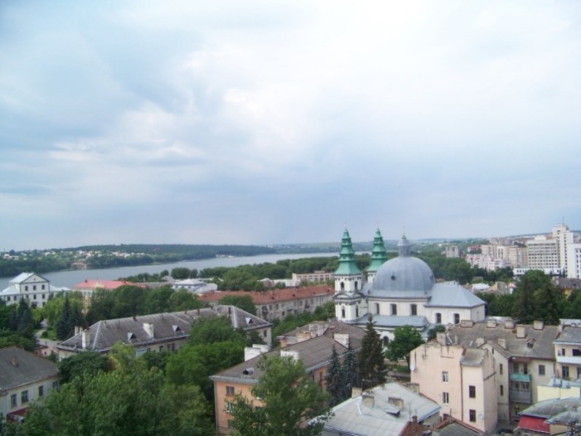
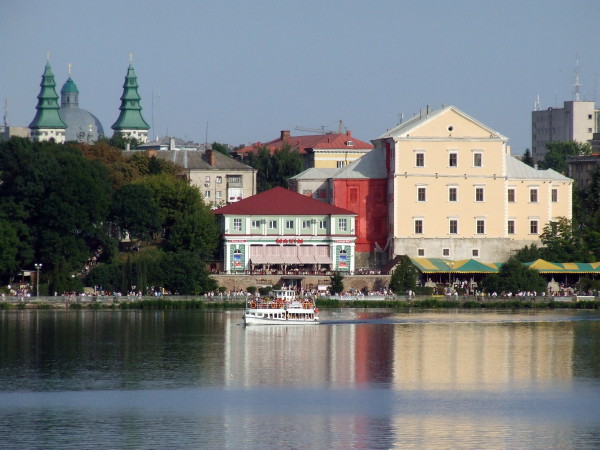
.jpg)
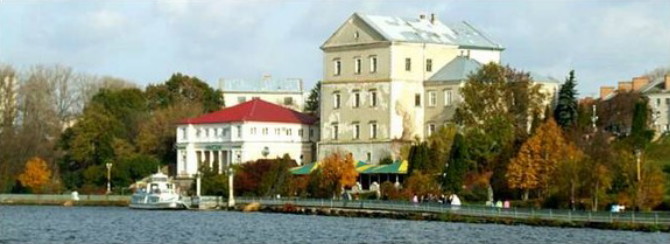
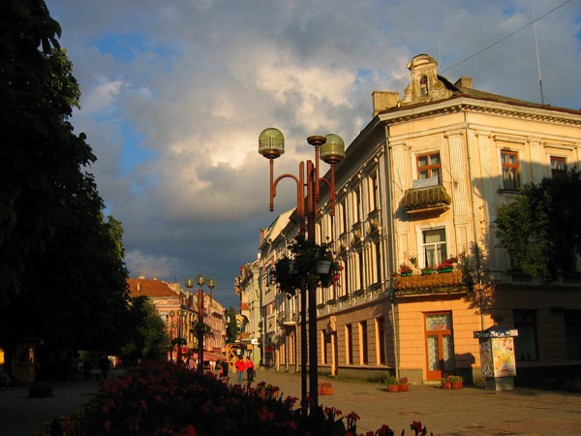
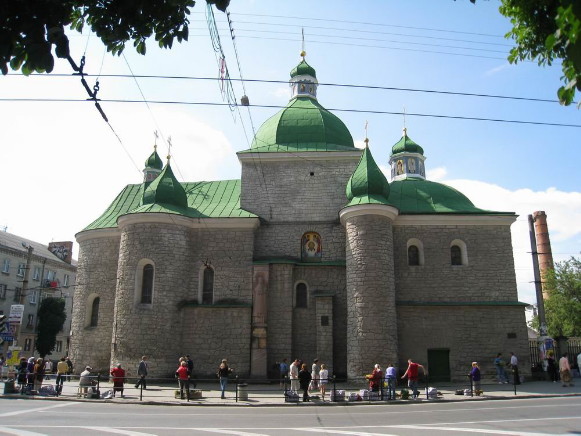
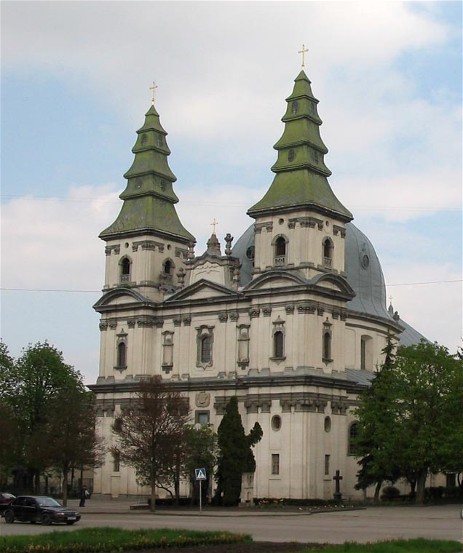
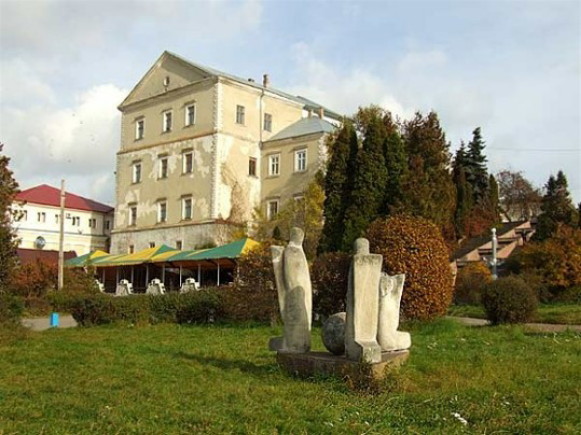
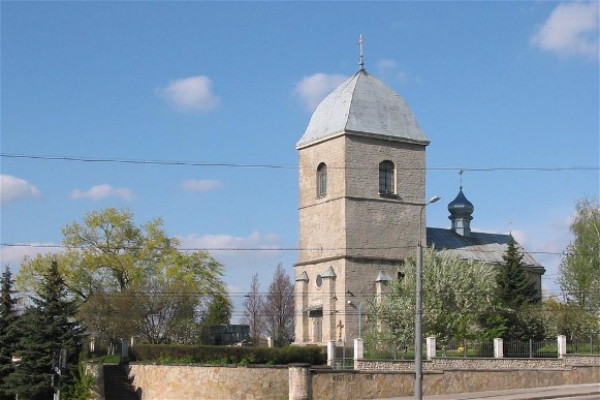
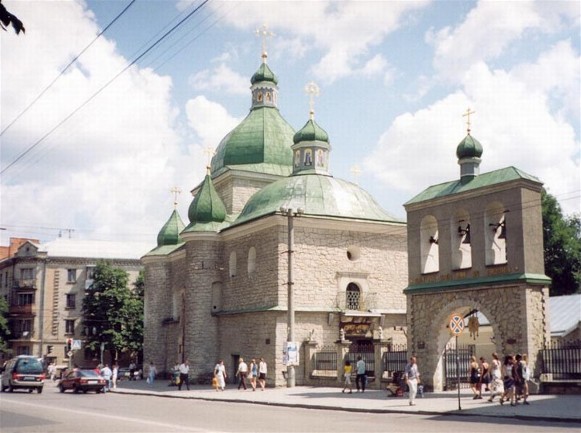
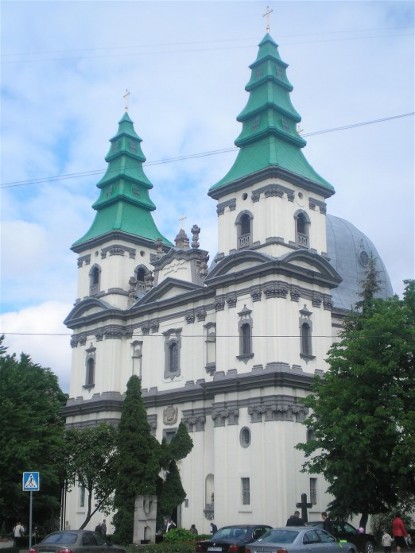
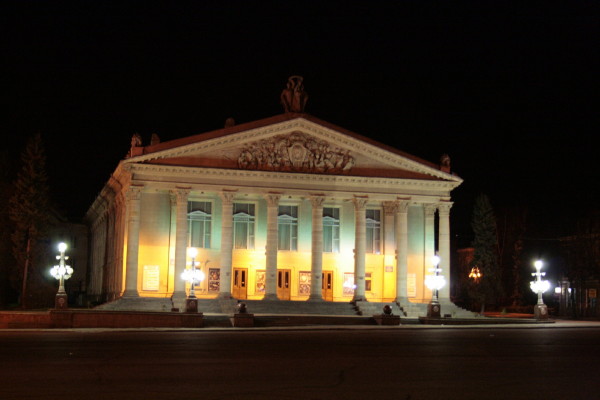
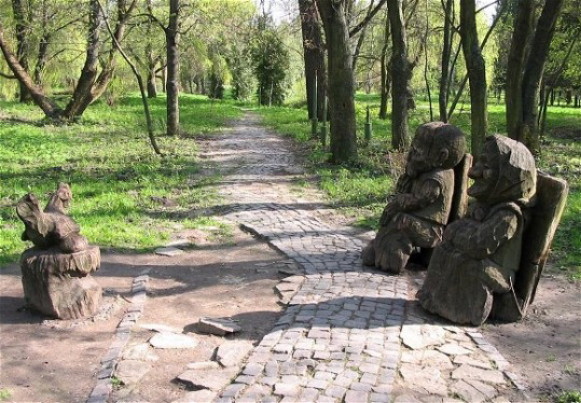
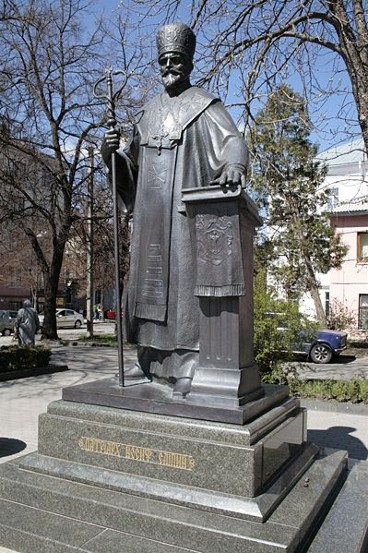
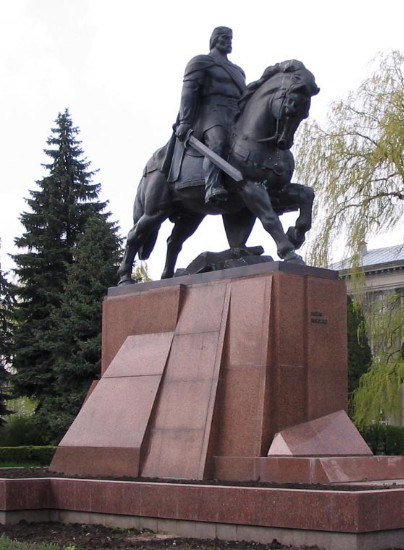
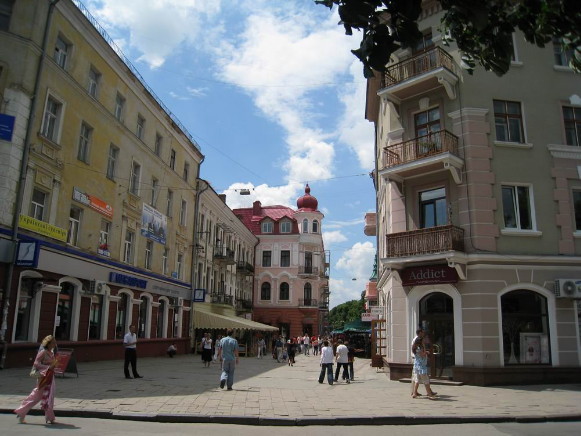
.jpg)
.jpg)